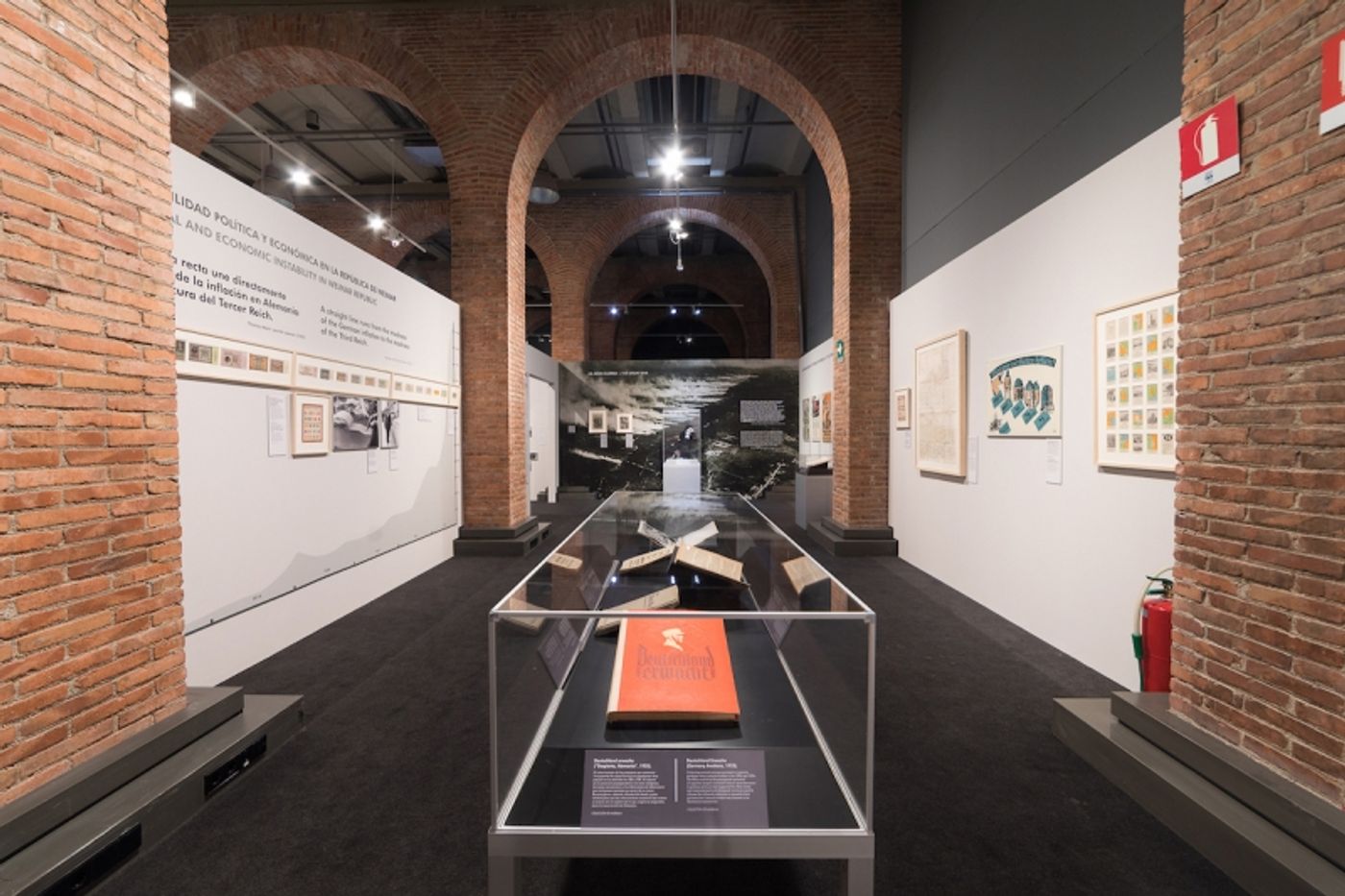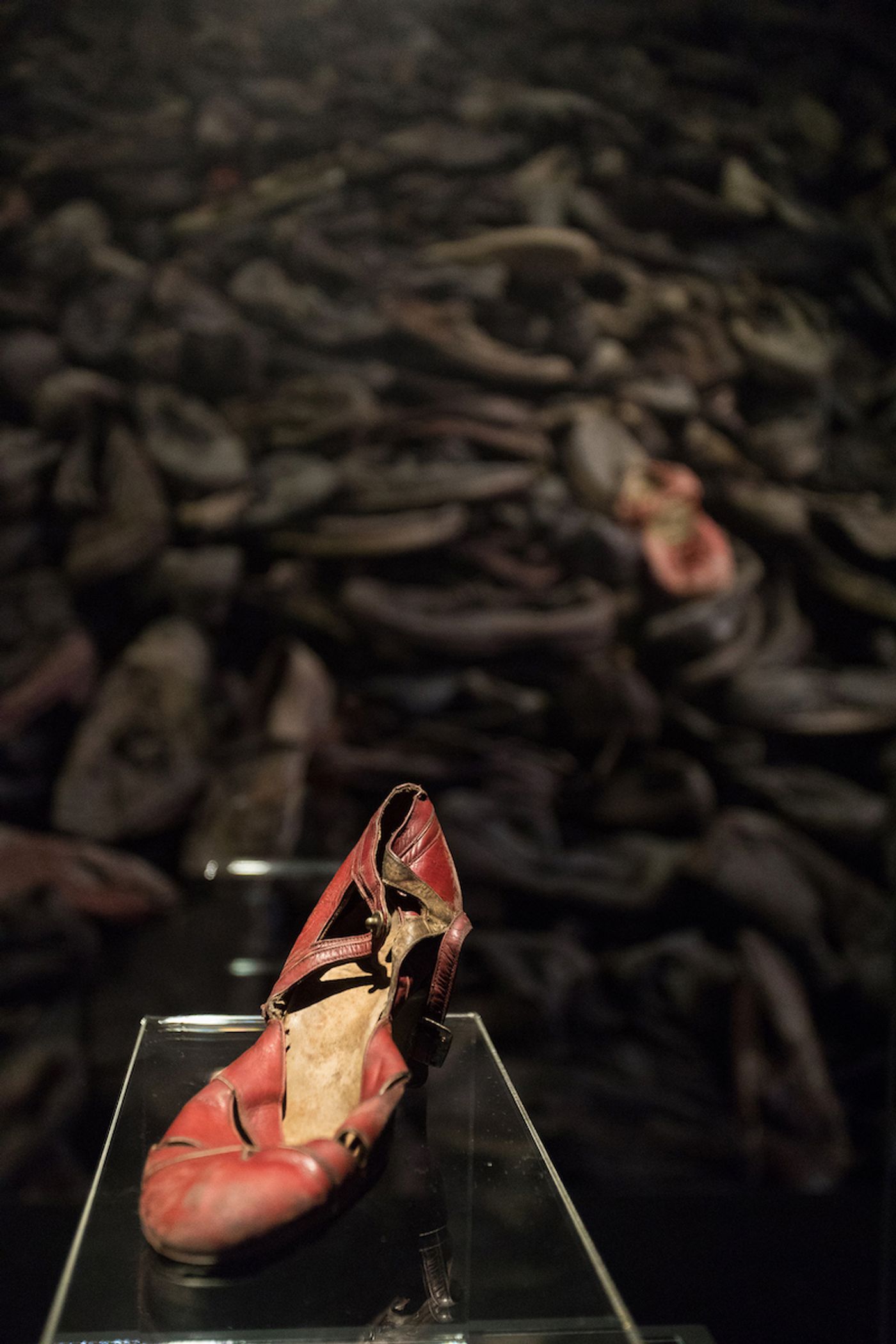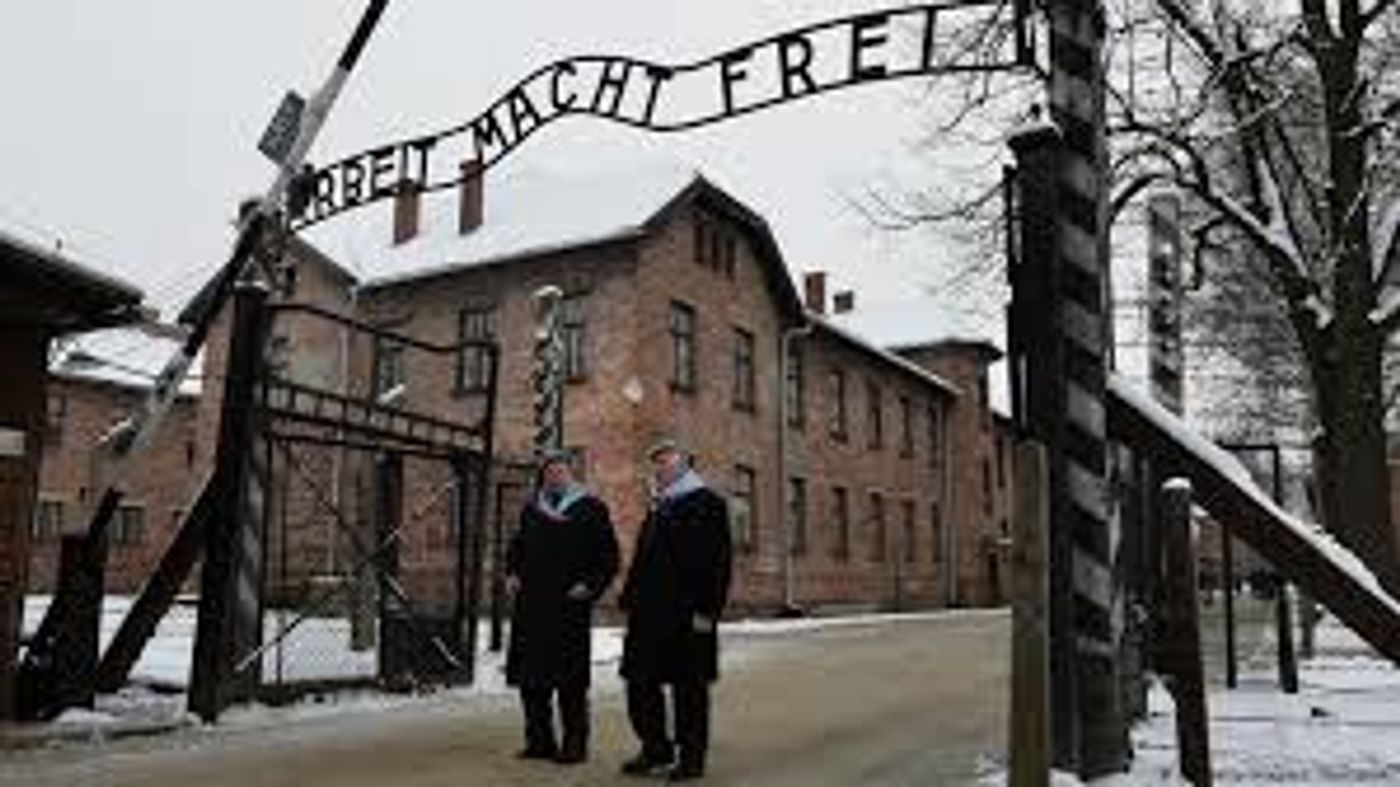Feature: AUSCHWITZ - NOT LONG AGO - NOT FAR AWAY at Union Station
Magnificent Remembrance Serves As Warning

New Exhibition open at KC's Union Station
Now open at Kansas City's Union Station is a huge, new, historical exhibition. The exhibition is fronted by one of the freight cars that once transported hundreds of thousands of souls to the Auschwitz death camp in southeastern occupied Poland between 1940 and 1945.
"Auschwitz. Not Long Ago. Not Far Away." recalls the NAZI terror which forced the rest of the civilized world to rise up and end Adolph Hitler, his acolytes, and the 3rd German Reich. Seventy-five million people died during World War II. Eleven million, inclusive of six million European Jews, were exterminated in the NAZI Holocaust.
 Auschwitz is personal to me.
Auschwitz is personal to me.
Auschwitz is personal to me. The Best Man at my wedding, a Chicago policeman, was the son of an Auschwitz survivor. I vividly remember the blue, numbered tattoo on the inside of his Mom's forearm. I have read thousands upon thousands of pages about the war and the camps.
Most notably and recently, I reread the incredible, fictionalized account of the Henry family by the unsurpassed Herman Wouk and Erik Larsen's nonfiction telling of the experiences of American Ambassador William Dodd and family in Germany from 1933 to 1937. Among the most vivid accounts are Stephen Spielberg's 1993 masterpiece "Schindler's List" and the records of the Shoah Foundation that Spielberg financed to allow Holocaust Survivors a tool with which to memorialize their nightmare. And I too recommend this exhibit.
I am the son, son-in-law, and nephew to veterans who stood witness to the horror. My Uncle Len never fully recovered. A boyhood neighbor was an official US Army photographer at the 1945 Nuremberg War Crime Trials. He had retained copies of the original photographic trial evidence.
The fear of "the other among us" explains much of what happened.
The Ottoman-Turks killed more than one million ethnic Armenians during World War I just for following their eastern version of Christianity. Between one hundred and two hundred thousand Christian Armenians were forced to convert to Islam or be wiped from existence.
Jews and other minorities have been persecuted for hundreds of years to one level or another. The Spanish Inquisition during the late 1300s required Jews to convert to Catholicism or die. It is estimated two thousand were burned at the stake.
 A century earlier all Jews were expelled from England and remained excluded until 1657. It is ironic that many Jewish characters in Shakespeare's plays became iconic although he likely never met one.
A century earlier all Jews were expelled from England and remained excluded until 1657. It is ironic that many Jewish characters in Shakespeare's plays became iconic although he likely never met one.
My Dad's people emigrated from what was then Austria (and is now Poland near Auschwitz) in 1885 to St. Louis. Oświęcim is the Polish name of the town that the Germans called Auschwitz. They took what had been a small Polish military base and expanded it into this horror. It is impossible to know for sure, but my ancestor's migration most probably had to do with a schism between branches of the religion they practiced.
My Mom's people came from Ukraine and Moldova as the result of a 1905 pogrom that alleged Jews had killed a Christian boy so that his blood could be used to manufacture Matzo. The 1905 violence became infamous enough that it was declaimed by then U.S. President Theodore Roosevelt.
One million, one hundred thousand people were murdered at Auschwitz-Birkenau during its over four years of operation. Most were Jews, but many were Poles, Roma and Sinti, Soviet POWs or other groups persecuted by Nazi ideology, such as: disabled, asocials, Jehovah's Witnesses or homosexuals. The fear of "the other among us" explains much of what happened.
 Germany is an advanced nation populated by friendly, intelligent, productive people.
Germany is an advanced nation populated by friendly, intelligent, productive people.
How could such a thing have ever happened? Surely, it must be a conspiracy theory. It is not.
How could a culture that gave us Guttenberg, Bach, Mozart, Schweitzer, Einstein, Freud, and Mahler have committed the unspeakable? They did.
And that is really the point about why good Midwestern people from the heartland of America need to see "Auschwitz. Not Long Ago. Not Far Away." Germany was and is an advanced, marvelous country populated by incredibly intelligent, friendly, and productive people. Many of our Midwestern ancestors came to America from Germany searching for a better life. These people were not monsters, they are us.
Autocrats told huge lies about minority populations to retain power.
Autocrats through history have manipulated their publics to believe that the difficulties of life came from the successes of minorities. Germany, following World War I, was an economic basket case. The Versailles Treaty took unreasonable vengeance on the losers of World War I. The National Socialist Party (the NAZIs) took advantage of the suffering German people and came to power with a maximum of only thirty-seven percent of the vote. German President Paul von Hindenburg was persuaded to appoint the spellbinding NAZI orator Adolph Hitler as Chancellor in 1932. Hindenburg died shortly thereafter and Hitler acceded to primacy.
Hitler made economic promises that could never come true and invented a racial archetype that a battered population wanted desperately to believe. Hitler's real plan was robbery writ large on a scale never before imagined. He would achieve his promises through murder of the unpopular in society, theft of their goods, and by stealing the resources (living space) from the surrounding countryside and from surrounding countries.
Auschwitz the exhibition retells the story.
"Auschwitz, Not Long Ago, Not Far Away," the exhibit, retells this horrible chapter in the human experience through photos and through remaining bits of the three camps. Auschwitz was a combination slave labor and extermination camp. Hundreds of thousands were shipped there in freight cars like the one that now sits outside Union Station on Pershing Avenue.
Non-Jewish people were automatically registered as prisoners of the concentration camp, but Jews deported for extermination went through a cruel selection process directed by German SS doctors. Those deemed unable to work were summarily executed in gas chambers disguised as shower rooms, their belongings were catalogued, and shipped to support the German war effort, before the bodies were burned in industrial crematorium.
Artifacts displayed.
Among the seven hundred artifacts displayed is the bird cage device filled with the deadly insecticide Zyklon B. The cage was lowered time after time into the gas chambers/disguised shower rooms so that the gas stayed low in the room for maximum lethality. A sealed door looms to one of the chambers and makes the stories we have all heard come to life. .A primitive surgery table used by SS doctors recalls the cruelty. One can imagine SS Dr. Joseph Mengele performing his fiendish "twins" experiments.
 Exhibit background.
Exhibit background.
"Auschwitz. Not Long Ago. Not Far Away." is the work product of a non- Jewish, Spanish museum exhibition company. It was first proposed to the Union Station staff in 2015 at an industry gathering in Atlanta. The exhibition was conceived by Muselalia of Spain, the Auschwitz-Birkenau State Museum led by Dr. Piotr Setkiewicz in Poland with the cooperation of Dutch Historian Dr. Robert Jan van Pelt, former Shoah Foundation President Dr. Michael Berenbaum, and chief curator Paul Salmons. Kansas City is the third and final stop for the exhibition after extended residencies in Madrid and New York..
Lessons to be learned about autocrats still among us.
"Auschwitz. Not Long Ago. Not Far Away." memorializes those who died and raises up the always recognizable, screeching, alternating, European police sirens of the period. We are warned to be alert to the echoes of the past and of those who might still be convinced to blame their fears, failures, and shortcomings on minority communities; like Jews, Asians, Latinos, Indians, African-Americans, or followers of faiths different from their own.
Many people over the centuries have been taken in by the dishonest railings of autocrats in a position to stoke fears, make up outrageous lies, or otherwise to convince normally, perfectly rational people that they need to be afraid and angry. Even worse, these otherwise normal folks might be convinced to seek solution to their woes in violent action.
Autocratic villains continue to exist in Europe, Asia, Africa, South America, the Middle East, and even here in America.
81,000 advance tickets sold prior to opening.
As of midnight on opening day, June 14, 2021, 81,000 tickets have been sold for "Auschwitz. Not Long Ago. Not Far Away;" the exhibit. Admission may not now be available until late summer or early fall. Plans are in place for the exhibition to continue until mid-January 2022. Auschwitz is an object lesson that might yet save the rest of us.
Videos

